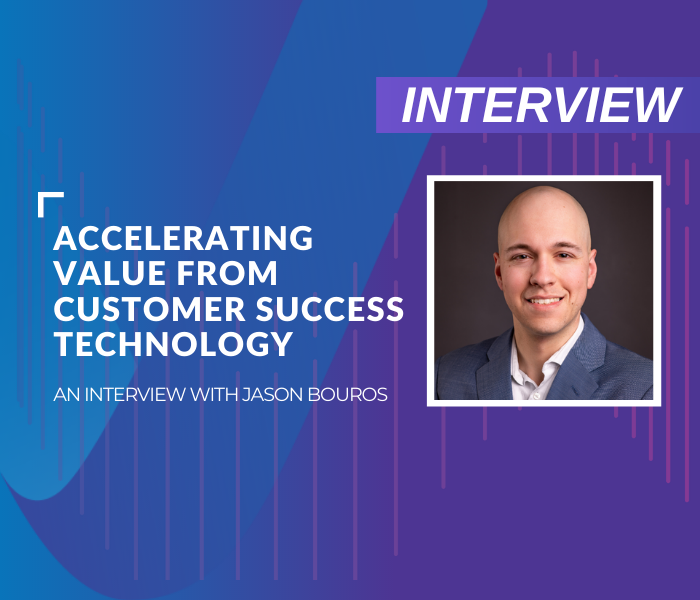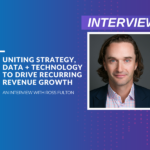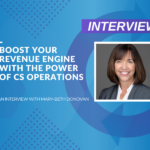Connecting Customer Success Strategy With Technology
Product Owners are at the center of software development in leading agile software companies. At their core, they are responsible for maximizing the value of product releases but their responsibilities can have them acting as a business strategist, product designer, customer liaison, and project manager, all rolled into one. A Product Owner acts as a conduit between all of the cross-functional teams and brings them together to cohesively identify customer value, translate this value into product optimizations and create efficiencies in the end-to-end value delivery pipeline.
This exact same Product Owner role is critical to your success in adopting and realizing value from your investments in CS technology. Success with CS technology hinges on the ability to translate your CS strategy design into technical designs that can then be configured in the technology and released to your teams for adoption. This translation exercise needs to be agile, fast and continuous.
To find out how future-forward CS and Revenue Operations leaders are capitalizing on Product Ownership, I spoke with Jason Bouros, Product Owner at Valuize. Jason is a Certified Product Manager who helps market-leading enterprise software companies maximize the impact, scale and efficiency of their CS technology investments. During our conversation, Jason shares his perspective on the vital role Product Ownership plays in Customer Success and shares strategic actions you can use to get started.
Q: What was your first job? How did you get started as a Product Owner?
“My first job ever was at Canadian Tire while I was in high school but my first official job in product ownership was with a global compliance company. As a Product Owner, I was tasked with bridging the gap between Product and Sales and taking ownership over Sales tools. I’ve also spent time working in the Customer Support side and it was in that role that I first got a chance to directly interact with Sales and understand how their feedback could be used to enhance the product. ”
Q: What is the role of a Product Owner in the context of Customer Success Operations? Why is it important and what outcomes does it enable in the organizations that Valuize serves?
“Simply put, the Product Owner in Customer Success Operations works with the business to understand the needs of the customer success strategy and translates those needs into technical specifications that are then built by the customer success technology/operations team. The Product Owner facilitates a smooth communication pipeline for customer success strategy requirements, safeguards the translation of those requirements such that they can be brought to life through technology and data in the hands of the teams making customers successful.
In a perfect world, you would build your customer success organization exactly what they need and want from customer success technology but every organization is bound by resource and time constraints plus the limits of what is possible in the customer success technology and data available. A Product Owner in Customer Success Operations identifies the most valuable features of your customer success technology by aligning them to business needs and prioritizes them for delivery by the development team, creating organizational efficiencies in the process.”
Q: What excites you about working in Product Ownership? How do you think the domain will continue to evolve from here?
“The immense growth potential in Product Ownership is very exciting. As the criticality of Product Owners becomes widely acknowledged, I think we’re going to see a significant increase in the breadth and number of Product Owner roles and responsibilities in Customer Success Operations. We’re at an exciting inflection point in the customer success technology industry that’s going to prompt a realignment and union of Product Ownership and Project Management roles. Product Ownership is a 360-degree comprehensive role that includes the responsibilities traditionally associated with Project Managers as well as enhanced knowledge of the product lifecycle and deeper insights into the domain. For those reasons, I think Product Owners are going to play an increasingly critical role for overseeing the development of customer success operational initiatives in the future.”
Q: In your experience working with a multitude of enterprise SaaS companies, what is the intersection of Customer Success, Product and Sales? How can organizations successfully bring these cross-functional teams together and ensure alignment?
“Product is the middleman in the organization; their role is to understand the needs of prospective customers via Sales and the needs of current customers via Customer Success and then match these against the goals and limitations of the organization. Sales owns one piece of the customer puzzle and CS owns the other. Product brings these pieces together to create an accurate picture of the customer that can be communicated to the entire organization. Through Customer Success’ interactions with customers, your Product teams can learn about the value customers are actually deriving from the use of your product and communicate this to Sales to be used in the acquisition of new customers and to Engineering in order to optimize your product. This communication process maximizes the value you can deliver to customers and ensures strong and lasting relationships.
In order to achieve this feedback loop between the different departments, you need to remove any kind of silos and allow Product teams to directly speak to anyone in the organization, from Sales and CS to Engineering, and externally to your customers. Product owners should focus on building strong relationships with these different stakeholders and be proactive in reaching out to them to fully understand and actualize customer needs.”
Q: In your opinion, what are the three most important elements of a strong Product Ownership practice?
“Communication, organization and a desire to pull up your sleeves and really understand customer issues. Product Owners should be able to dig deep and get to the core of every issue to really understand what the business (the customer) is trying to achieve. You need to solve the root of the problem, as opposed to the symptoms of an issue. Ultimately, that’s the secret to saving the company money in developing and creating more value for both the customer and the organization.”
Q: As a Product Owner, how do you help software organizations become more efficient with their Customer Success processes?
“Organizations are faced with a deluge of customer data and Product Owners filter and prioritize that data to select the most important metrics that the business needs to take action on . This approach will maximize your organization’s impact because you’re ensuring that the highest value solutions are being solved first. Additional efficiencies are created when you can operationalize these solutions through a purpose built Customer Success technology platform like Gainsight and automate your processes so they can be carried out on a larger scale across a wider segment of your customer base using fewer resources.”
Q: What are some of the most common challenges that software organizations face when it comes to the implementation and operationalization of their Product Ownership frameworks? How do you recommend that Customer Success Operations leaders successfully navigate this?
“One of the biggest mistakes that organizations tend to make when implementing a new Product Ownership framework is not properly understanding resources availability or outlining a thorough timeframe for the transition. Implementing a new Product Ownership framework isn’t an overnight change that can be accomplished by senior leadership alone; it requires the support and cooperation of everyone in your organization to make sure that everyone has the resources and support they need to successfully make the transition.
Other key considerations businesses should take into account are the needs of the organization and the current processes in place. What’s working well in your current processes? What isn’t working well? How can your processes be improved? Addressing these questions can help you select the right Product Ownership framework that will best serve your organization’s needs and ensure a smooth and successful transformation.”
Q: What are the most important considerations that companies should take into account when adopting Agile methodologies? Where should companies begin and how can organizations ensure a successful Agile transformation?
“Before switching to Agile, leaders should note that Agile comes in many different flavours. There isn’t a standard implementation of Agile but a myriad of models to choose from so beginning your transformation by selecting the right framework for your organization is crucial to success. I recommend these articles by Teamwork and Lucidchart to get started.
As with any Agile framework, this change doesn’t happen overnight. Leaders need to be ready to put in the long-term work necessary to make the transition successful. This includes deploying the right resources and putting in the time and effort to train staff and provide them with the tools to be successful with your chosen Agile framework. With any large-scale transformation, there will be growing pains and it will require a constant process of feedback, iteration and improvement. It’s a lifelong journey for an organization to make the transition to Agile so leaders need to continuously work to make that a little bit better and a little bit more efficient over time.”
Q: What role do you think technology and data play in an organization’s Customer Success strategy?
“Understanding data should be the imperative of every SaaS business as it’s the most important driver in any organization. Complete and accurate data is vital for a thorough analysis of your customers and should form the basis of all decision making across the organization. Having a complete 360-view of your customer requires gathering data from a variety of sources, including market data, competitive analysis and data directly from the customers themselves.
Strategy and Technology are tools used to meet the needs of your customers, which are determined by the data you have gathered and analysed. Customer needs should dictate strategy and technology, technology and strategy should never dictate customer needs.”
Bonus Q: What’s your favourite way to spend a Sunday?
“My favourite way to spend a Sunday is either going for a hike with my dog or flying around Ottawa to log pilot hours for my pilot’s license. I’m a huge fan of the outdoors!”
Take Your Customer Success Operations To The Next Level
To champion a best-in-class deployment of customer success technology, here are Jason’s top 3 recommendations:
- Break down silos and bridge the gap between your Customer Success and IT teams. It’s important for these teams to be in constant and open communication so that feedback and issues from the teams managing customers are shared and implemented across the customer lifecycle and maximum value is delivered by each team/ at each milestone.
- When implementing a new agile t framework, begin by assessing your current processes and resources and then determine the right agile methodology that fits your needs. Build out a timeframe to roll out changes and ensure there’s a feedback loop in place that incorporates responses from your team and enables improvements and revisions along the way.
- Invest in a thorough and accurate data model with a solid governance model in place to optimize the impact of your customer success strategy. Customer data forms the basis of all business decision making so a clean data set is pivotal/integral.
Are you ready to boost the effectiveness, efficiency and scalability of your Customer Success processes and projects? Read our article for 5 steps to future-proof your CS organization using Agile development.





